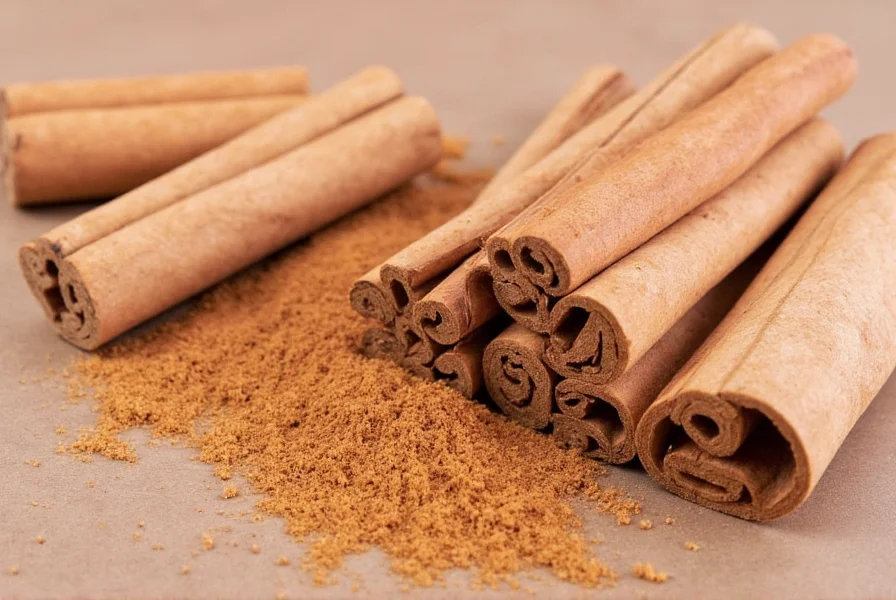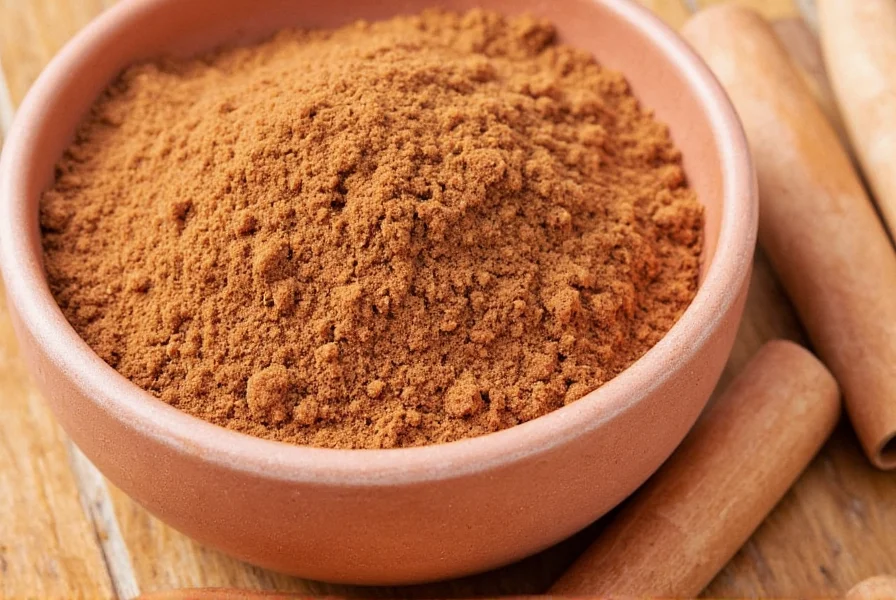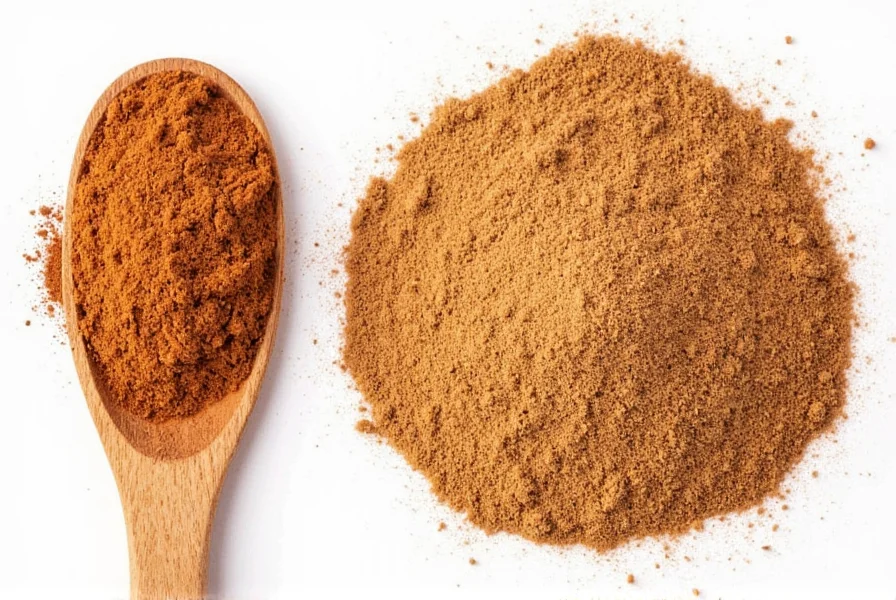Running out of cinnamon mid-recipe can be frustrating, but you likely have suitable alternatives already in your spice cabinet. Cinnamon's distinctive warm, sweet flavor with subtle citrus notes makes it irreplaceable in many dishes, but understanding the right cinnamon replacement for your specific needs ensures your culinary creations still shine. Whether you're baking cookies, making chai tea, or preparing a savory Moroccan tagine, knowing effective cinnamon substitutes prevents recipe disasters and expands your flavor possibilities.
Understanding Cinnamon's Flavor Profile
Cinnamon provides a complex flavor profile that combines warmth, sweetness, and subtle citrus notes with a hint of spiciness. This unique combination makes it challenging to find perfect cinnamon alternatives, but understanding what makes cinnamon special helps identify the best replacement options. The two main varieties—Ceylon ("true" cinnamon) and Cassia (common in supermarkets)—have slightly different intensities, with Cassia being stronger and more pungent. When seeking a cinnamon substitute for baking or cooking, consider which aspects of cinnamon's flavor are most important for your specific recipe.

Top Cinnamon Substitutes for Baking and Cooking
Not all cinnamon replacements work equally well in every application. The ideal cinnamon replacement for your recipe depends on whether you're preparing sweet or savory dishes, and what specific flavor elements you want to preserve.
Allspice: The Closest Flavor Match
Allspice offers the most similar flavor profile to cinnamon, combining notes of clove, nutmeg, and cinnamon itself. This makes it an excellent 1:1 substitute in most recipes. When using allspice instead of cinnamon, you'll notice a slightly more complex, peppery finish. It works particularly well in:
- Baked goods like snickerdoodles and coffee cakes
- Spice cakes and gingerbread
- Pumpkin pie and other fall desserts
- Caribbean jerk seasoning blends
Nutmeg: For Subtle Warmth
Nutmeg provides warm, nutty notes similar to cinnamon but with less sweetness. Use approximately half the amount of nutmeg compared to the cinnamon called for in your recipe, as it has a stronger flavor. Nutmeg works best as a cinnamon replacement in:
- Custards and creamy desserts
- Mashed potatoes and other root vegetable dishes
- Eggnog and warm spiced beverages
- Bechamel sauces for savory dishes
Cardamom: For Floral Complexity
Cardamom offers a citrusy, floral alternative to cinnamon with similar warming properties. Use a 3:4 ratio (¾ teaspoon cardamom for every teaspoon of cinnamon). This cinnamon substitute shines in:
Pumpkin Pie Spice: The Ready-Made Alternative
This pre-mixed spice blend typically contains cinnamon, ginger, nutmeg, and cloves—making it an excellent 1:1 cinnamon replacement when you need that familiar warm spice profile. When using pumpkin pie spice as a cinnamon substitute:
- No ratio adjustment needed—use equal amounts
- Ideal for quick breads, muffins, and cookies
- Works well in oatmeal and yogurt toppings
- Perfect for fall-themed desserts and beverages
Specialized Cinnamon Alternatives for Specific Needs
Certain dietary restrictions or recipe requirements call for specialized cinnamon replacements. Understanding these niche alternatives ensures everyone can enjoy cinnamon-flavored dishes regardless of limitations.
Cinnamon Substitute for Sensitive Stomachs
For those with cinnamon sensitivities, a blend of equal parts nutmeg and allspice provides similar warmth without the potential irritants in cinnamon. This cinnamon replacement for sensitive stomachs works particularly well in:
- Overnight oats and breakfast porridges
- Gentle spice rubs for poultry
- Mildly spiced fruit sauces
- Delicate custards and puddings
Diabetic-Friendly Cinnamon Alternatives
While cinnamon itself may help regulate blood sugar, those seeking cinnamon alternatives for diabetes management might consider:
- Vanilla extract (¼ teaspoon for every ½ teaspoon cinnamon)
- Lemon zest (1 teaspoon for every ½ teaspoon cinnamon)
- Unsweetened cocoa powder (1:1 ratio for chocolate-based recipes)
These options provide flavor complexity without affecting blood sugar levels.
| Substitute | Ratio to Cinnamon | Best For | Flavor Notes |
|---|---|---|---|
| Allspice | 1:1 | Baking, savory dishes | Warm, slightly peppery, complex |
| Nutmeg | 1:2 | Custards, creamy dishes | Nutty, earthy, less sweet |
| Cardamom | 3:4 | Sweet breads, beverages | Floral, citrusy, aromatic |
| Pumpkin Pie Spice | 1:1 | Fall baking, quick breads | Complex, balanced spice blend |
| Apple Pie Spice | 1:1 | Fruit desserts, sauces | Slightly sweeter, fruit-enhancing |

Expert Tips for Successful Substitution
When replacing cinnamon in recipes, consider these professional techniques to ensure optimal results:
- Blend spices for more complex replacements—try equal parts nutmeg and allspice for a closer match to cinnamon's profile
- Adjust sweetness when using less sweet substitutes like nutmeg or cardamom
- Add citrus zest to mimic cinnamon's subtle citrus notes when using alternatives
- Toast spices briefly before use to enhance their natural oils and flavors
- Start with less and taste as you go—you can always add more but can't remove excess
When NOT to Substitute Cinnamon
While excellent cinnamon alternatives exist, some recipes rely so heavily on cinnamon's unique properties that substitutions significantly alter the final product. Consider avoiding cinnamon replacements in:
- Traditional cinnamon rolls (the filling requires cinnamon's specific flavor)
- Certain Middle Eastern and Indian spice blends where cinnamon plays a precise role
- Recipes specifically designed for cinnamon's blood sugar regulating properties
- Dishes where cinnamon is the star flavor rather than a supporting note
Conclusion: Finding Your Perfect Cinnamon Replacement
The ideal cinnamon substitute depends entirely on your specific recipe and dietary requirements. For most baking applications, allspice or pumpkin pie spice provides the closest match, while nutmeg works better in creamy preparations. Understanding the flavor profile you're trying to replicate—whether it's cinnamon's warmth, sweetness, or subtle citrus notes—helps select the most appropriate replacement. Keep these cinnamon alternatives in mind for your next culinary adventure, and don't be afraid to experiment with spice blends to create your own customized cinnamon replacement that perfectly suits your taste preferences and recipe needs.
Frequently Asked Questions
Can I use nutmeg instead of cinnamon in apple pie?
Yes, but use half the amount of nutmeg compared to cinnamon, as it has a stronger flavor. For best results in apple pie, combine nutmeg with a small amount of allspice (⅛ teaspoon) to better replicate cinnamon's complex profile while maintaining the pie's traditional flavor balance.
What's the best cinnamon substitute for sensitive stomachs?
For those with cinnamon sensitivities, a blend of equal parts nutmeg and allspice provides similar warmth without potential irritants. Use ¾ teaspoon of this blend for every teaspoon of cinnamon called for in your recipe. This cinnamon replacement works particularly well in gentler applications like overnight oats, mild fruit compotes, and delicate custards.
Can I substitute pumpkin pie spice for cinnamon in cookies?
Yes, pumpkin pie spice makes an excellent 1:1 substitute for cinnamon in most cookie recipes. Since it already contains cinnamon along with complementary spices like ginger and nutmeg, it creates a more complex flavor profile. This works particularly well in snickerdoodles, spice cookies, and gingerbread varieties, though the final product will have slightly more pronounced ginger notes.
What's a good cinnamon replacement for savory dishes?
For savory applications like Moroccan tagines or Middle Eastern rice dishes, a blend of equal parts allspice and cardamom works best as a cinnamon substitute. Use ¾ teaspoon of this blend for every teaspoon of cinnamon. This combination preserves the warm, complex notes cinnamon provides in savory contexts without overwhelming the dish with sweetness.
How do I substitute cinnamon in chai tea?
For chai tea, cardamom makes the best cinnamon substitute, using a 3:4 ratio (¾ teaspoon cardamom for every teaspoon of cinnamon). Alternatively, a blend of equal parts nutmeg and allspice (⅝ teaspoon total for every teaspoon of cinnamon) creates a complex, warming alternative that complements the other chai spices while maintaining the beverage's characteristic warmth.











 浙公网安备
33010002000092号
浙公网安备
33010002000092号 浙B2-20120091-4
浙B2-20120091-4